
The golden samphire is a perennial coastal species, which may be found growing on salt marsh or sea cliffs across western and southern Europe and the Mediterranean.

Inula is a large genus of about 90 species of flowering plants in the family Asteraceae, native to Europe, Asia and Africa.
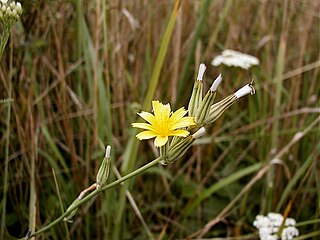
Lapsana is a genus of flowering plants in the sunflower family. It is native to Europe and northern Asia. Nipplewort is a common name for plants in this genus.
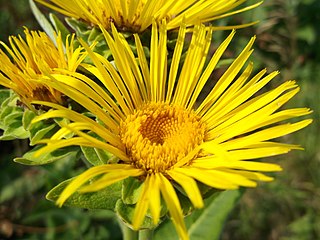
Elecampane, Inula helenium, also called horse-heal or elfdock, is a widespread plant species in the sunflower family Asteraceae. It is native to Eurasia from Spain to Xinjiang Province in western China, and naturalized in parts of North America.
Fleabane is a common name for some flowering plants in the family Asteraceae.

Erigeron canadensis is an annual plant native throughout most of North America and Central America. It is also widely naturalized in Eurasia and Australia. Common names include horseweed, Canadian horseweed, Canadian fleabane, coltstail, marestail, and butterweed. It was the first weed to have developed glyphosate resistance, reported in 2001 from Delaware.

Erigeron sumatrensis is an annual herb probably native to South America, but widely naturalised in tropical and subtropical regions, and regarded as an invasive weed in many places. In the British Isles it is known as Guernsey fleabane. Other common names include fleabane, tall fleabane, broad-leaved fleabane, white horseweed, and Sumatran fleabane.
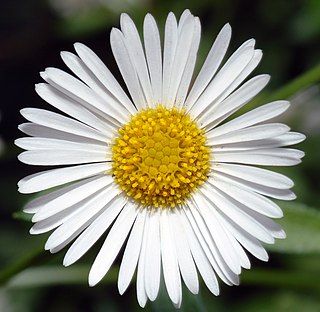
Erigeron karvinskianus, the Mexican fleabane, is a species of daisy-like flowering plant in the family Asteraceae, native to Mexico and parts of Central America.
Fleawort is a common name for several plants and may refer to:

Ambrosia psilostachya is a species of ragweed known by the common names Cuman ragweed and perennial ragweed, and western ragweed.
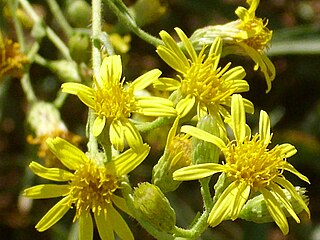
Inuleae is a tribe of flowering plants in the subfamily Asteroideae.

Inula salicina is a plant species in the genus Inula in the family Asteraceae. It is found across Europe and Asia from Portugal to Japan. It has been reported growing in the wild in a few scattered locations in North America but it has not become widely established there.

Inula britannica, the British yellowhead or meadow fleabane, is a Eurasian species of plant in the genus Inula within the daisy family. It is widespread across much of Europe and Asia, and sparingly naturalized in scattered locations in North America.
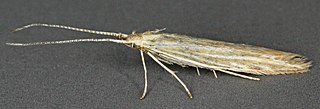
Coleophora follicularis is a moth of the family Coleophoridae. The species was first described in 1802 by Jean Nicolas Vallot, a French entomologist. It is found in all of Europe.

Dittrichia viscosa, also known as false yellowhead, woody fleabane, sticky fleabane and yellow fleabane, is a flowering plant in the daisy family.

Hellinsia carphodactyla is a moth of the family Pterophoridae, first described by Jacob Hübner in 1813. It is known from most of Europe, Asia Minor and North Africa.
Coleophora conyzae is a moth of the family Coleophoridae. It is found from Sweden and Finland to the Iberian Peninsula, Corsica, Sicily and Crete and from Great Britain to Romania.
Coleophora inulae is a moth of the family Coleophoridae. It is found from Finland to the Pyrenees, Italy and Bulgaria and from Great Britain to southern Russia.
Digitivalva granitella is a moth of the family Acrolepiidae. It is found in most of Continental Europe, except Fennoscandia, the Netherlands, Portugal, the Baltic region, the western part of the Balkan Peninsula and Ukraine.

Inula magnifica, the giant fleabane, is a species of flowering plant in the sunflower family Asteraceae, native to the eastern Caucasus. It is a tall herbaceous perennial growing to 1.8 m (6 ft) tall by 1 m (3 ft) broad, with hairy stems and leaves. In late summer it bears rich yellow, daisy-like composite flower-heads 15 cm (6 in) in diameter, with narrowly tubular ray florets. It is suitable for planting at the back of a border, or in a wild meadow or prairie-style garden.















